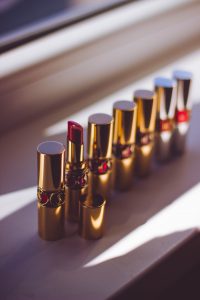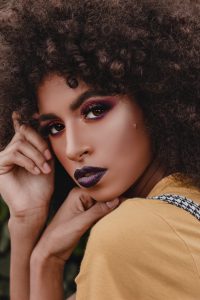Exploring the Psychology and History Behind Our Favorite Lip Colors

Lipstick has been a staple in women’s makeup bags for centuries, and for good reason. Not only does it add a pop of color to the face, but it also has the power to boost confidence, change moods, and even express one’s personality. In this blog post, we’ll explore the psychology and history behind some of our favorite lip colors and how they can influence our perception of ourselves and others.
Red lipstick has been a symbol of power and seduction for centuries. In ancient Egypt, women would crush insects to create a vibrant red pigment to apply to their lips. Fast forward to the 1920s, and red lipstick was synonymous with the flapper movement, a time when women were breaking free from traditional gender roles and expressing themselves through fashion and beauty. Today, red lipstick is still a symbol of confidence and power, with studies showing that wearing red lipstick can make a woman feel more attractive and confident in social situations.
Pink lipstick, on the other hand, has a more playful and youthful connotation. In the 1950s, pastel pink shades were all the rage, with Marilyn Monroe and Audrey Hepburn leading the trend. Pink lipstick is often associated with innocence, sweetness, and femininity, making it a popular choice for weddings, proms, and other formal events.

Nude lipstick has become increasingly popular in recent years, thanks in part to the rise of the “no-makeup” makeup trend. Nude lipstick is versatile and easy to wear, making it a go-to choice for many women. However, it can also be a statement of confidence and natural beauty, as it allows the wearer’s natural lip color to shine through.
But lipstick is not just about the color – it’s also about the texture and finish. Matte lipstick has become a popular choice in recent years, with its long-lasting, non-shiny finish. Matte lipstick can make a bold statement and is often associated with confidence and sophistication. However, it can also be drying and less forgiving on dry or cracked lips.
On the other hand, glossier finishes, such as sheer or satin lipsticks, have a more playful and youthful connotation. Sheer lipsticks offer a hint of color, making them a great choice for everyday wear or for those who prefer a more natural look. Satin lipsticks offer a subtle shine, making them a great choice for special occasions or for those who want to add a touch of glamour to their look.
So why does lipstick have such a powerful impact on our perception of ourselves and others? One theory is that lipstick enhances the natural lip color, making them look fuller and more defined. This can boost self-confidence and make the wearer feel more attractive. Additionally, lipstick is often associated with femininity and can be a way for women to express their personality and style.

The psychology behind lipstick color can also be seen in marketing and advertising. Brands often use specific colors and finishes to evoke certain emotions or associations. For example, a brand may use a bold red lipstick to promote a sense of power and confidence, while a pastel pink shade may be used to evoke a sense of playfulness and innocence.
In conclusion, lipstick is much more than just a cosmetic product. It has the power to boost confidence, express personality, and evoke certain emotions and associations. By understanding the psychology and history behind our favorite lip colors, we can better understand the impact they have on our perception of ourselves and others. Whether you prefer a bold red, a playful pink, or a natural nude, there is a lipstick shade and finish out there for everyone. So go ahead and experiment – you never know what power your favorite lipstick shade may hold.




